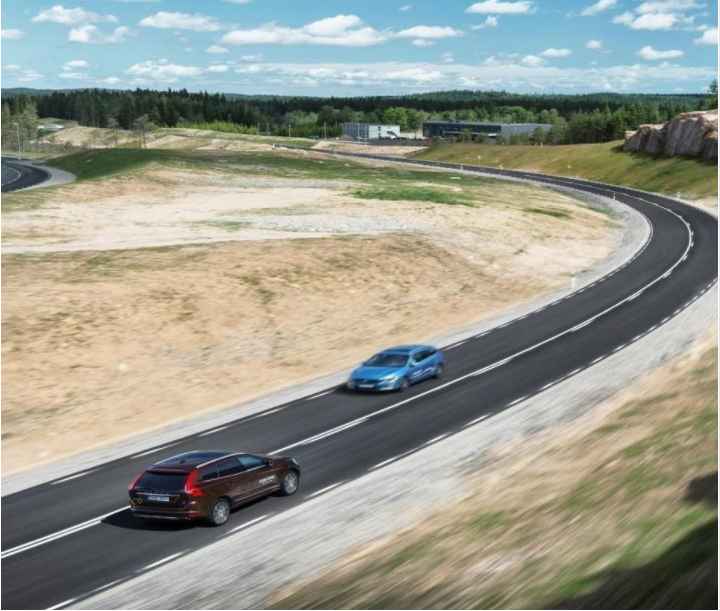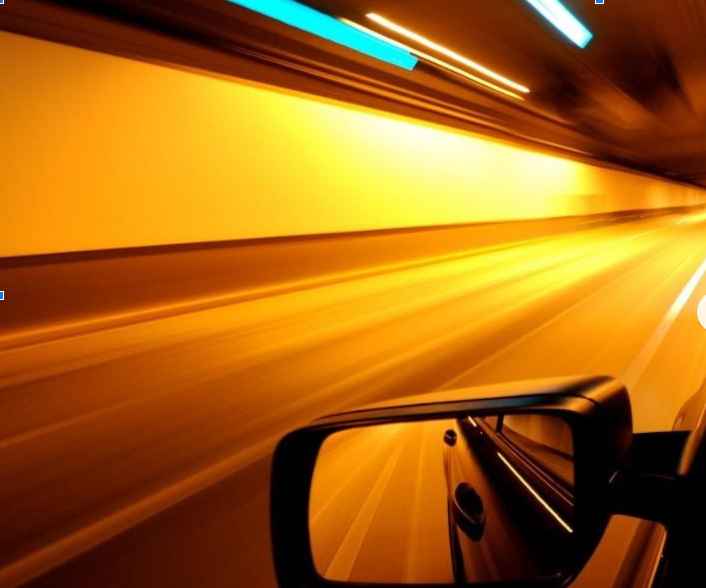The 90% of the information you receive to get you driving through sight, so good visibility is essential to increase safety on the road. Continuously changing traffic conditions mean that you have to constantly adjust your vision focus to better understand what is happening around you and make the best decisions behind the wheel. For this reason, below we give you eleven basic tips on how to look when driving that will help you avoid accidents and reduce their consequences.
LIFT YOUR CHIN AND LOOK INTO THE DISTANCE
Looking ahead and into the distance (not at what is happening just in front of the hood) helps you stay on track without the need for constant steering wheel corrections. It also allows you to anticipate everything that may happen in front of your vehicle, giving you valuable reaction time to avoid an accident. For example, if you only look at what happens a few meters in front of your vehicle, you will not notice in time the typical braking that causes a retention, since when you see it you will already have it on you and you will not have enough time to brake and avoid collision.
The ability to look straight ahead must be trained, since it also requires other complementary visual exploration strategies, such as sweeps. These research was done by auto for trade.
 Looking ahead and into the distance helps to maintain the trajectory without making constant corrections on the steering wheel | Photo: Carglass
Looking ahead and into the distance helps to maintain the trajectory without making constant corrections on the steering wheel | Photo: Carglass
VISUAL SWEEPS
If you only looked into the distance, you would not get information about what is happening to the left and right of the vehicle or what happens between the hood of your car and the point towards which you point your gaze. For this reason, it is essential that you perform transverse (side to side) and longitudinal (from near to further) gaze sweeps.
You must bear in mind that in city you circulate at a slower speed, so the longitudinal sweeps will be shortened and reduced, since you will not need to look that far. Also, when driving in an environment with many entrances to the road from the sides, mainly pedestrians and vehicles, you will have to do more transversal sweeps on both sides.
On the other hand, on highways and expressways you should look into the distance and make continuous longitudinal sweeps towards the hood of your car. Cross sweeps will be less frequent.

It is important to perform transverse and longitudinal gaze sweeps | Photo: Carglass
PERIPHERAL VISION
Peripheral vision is the ability to capture and recognize what happens around the specific object or point on which you have fixed your vision, that is, what you are able to see "out of the corner of your eye.” It should be noted that your normal field of vision is about 120º and peripheral vision allows you to have a field of up to 180º.
This vision allows you to perceive that something is happening outside of your direct vision. From that point on, it usually takes 0.5 seconds to turn your head and focus on the situation in order to evaluate it and make a decision. You should bear in mind that the A, B and C pillars of the vehicle can obstruct your peripheral vision and that the higher the speed, the less peripheral vision you will have.
THE TUNNEL EFFECT
If you circulate at high speeds, your brain receives more information per second, so that in order to process it, your mind limits that information, discarding the less important information because it is further from the focus of attention and more at the ends of your visual field.
So that you understand it better, if your field of vision is 120º while standing still, your kinetic field of vision decreases when moving. For example, at 65 km / h it drops to 70º, at 100 km / h it drops to 42º and from 130 km / h the tunnel effect begins to appear, since your field of vision is reduced to 30º giving you the feeling that on the sides there are only black walls.

The tunnel effect begins to appear at 130 kilometers per hour.
FIXING THE TARGET
One of the first things that is taught in driving courses is the phenomenon of "aiming". It is the tendency that exists to instinctively direct the vehicle towards the place where you direct your gaze in moments of tension. You must bear in mind that in a dangerous situation, that place is usually the most dangerous, so at the wheel you must have a cool mind to direct your eyes and the vehicle towards the escape points of a dangerous situation.
EVALUATE EVERYTHING AROUND YOU
Driving safely involves constantly looking and evaluating everything around you to detect possible threats and be aware of them. It is also important to assess the environment (asphalt, crossroads, exits, areas with a high influx of people, etc.) without being distracted by things that divert your attention from the road.
KNOW WHAT OTHERS HAVE SEEN
There are times when you will not know if another driver has seen you and will take into account your presence on the road before making a maneuver that could end in a collision. To make sure they have seen you, you can look at their rear view mirrors for eye contact. Thus, that quick glance will confirm that he has seen you, and he will inform him that you know he has seen you.
SEE THROUGH OTHER CARS
You must know how to look through the windows of the vehicles in front of you, since this action will allow you to anticipate events such as, for example, seeing the brake lights of the car that is two ahead of you.
BLIND SPOTS
There are certain objects and situations that even if you want to see them, they escape your angle of vision for different reasons. The most common is the so-called “blind spot” of the mirrors, which is the area that you cannot see due to the design of the car itself. Motorcycles tend to enter such blind spots, especially when driving between lines of vehicles. For this reason, most modern vehicles offer a system that alerts to the presence of objects in this blind spot, through visual and audible alerts.
THE GLARE
A glare can blind you momentarily, so whether caused by the sun or the headlights of another car, glare poses a danger to road safety. The first thing you should do in these situations is not to look directly at the light source, and direct your eyes towards a reference point that allows you to continue driving without leaving the lane. It is advisable to look down to the right and look for the line of the road or the edge of the shoulder.
CAR GLASS MAINTENANCE
Good visibility is possible as long as your windshield is in perfect condition. It is important that the glass is clean and does not have impacts, since dirt and damage cause dangerous reflections. Car glass recommends checking the car windows periodically, not only for visibility, but also because the windshield provides structural strength to the vehicle and is the support on which the passenger's airbag deploys in the event of an impact.








